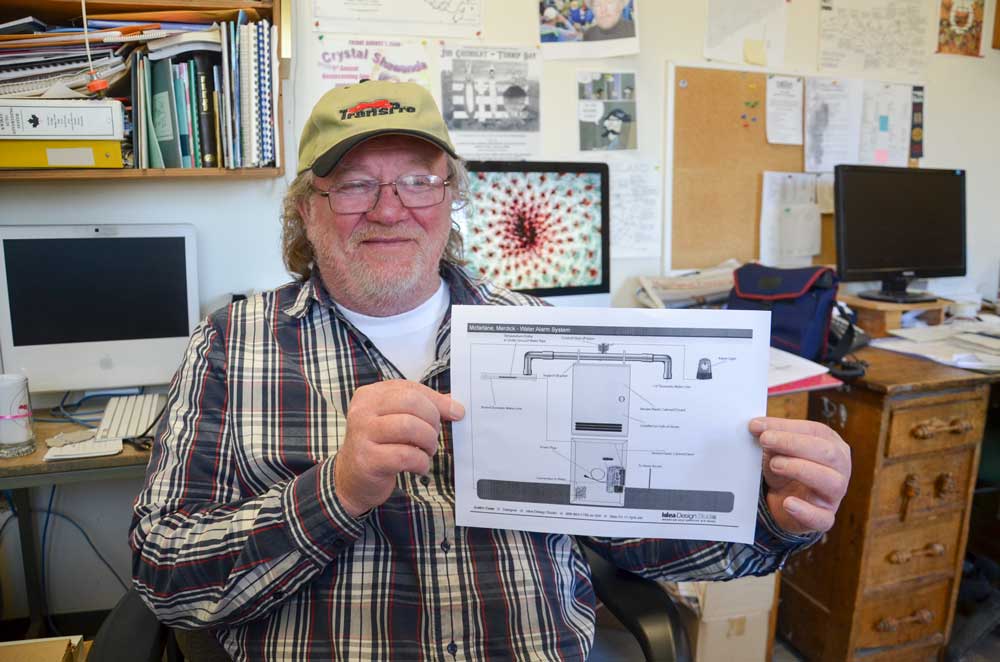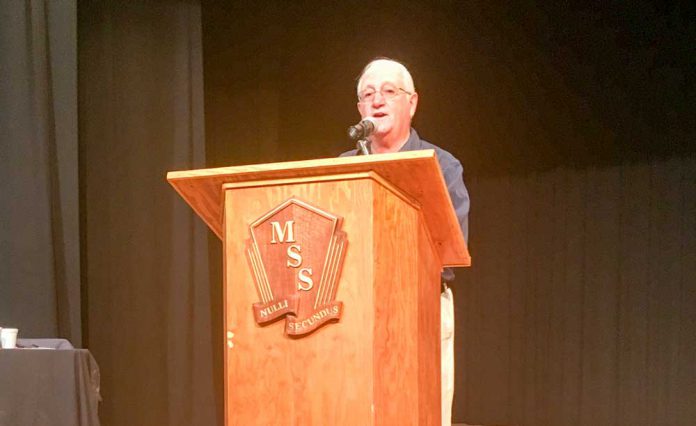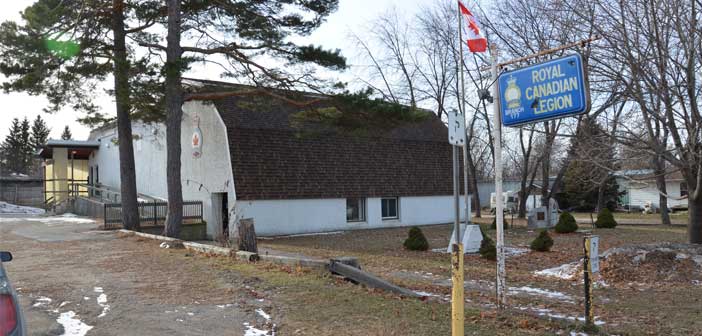An affordable solution to one of winter’s perils
PROVIDENCE BAY—If there is a ready term to describe Providence Bay’s Merdick McFarlane that term would be “renaissance man.” Entrepreneur, country music singer, composer, carpenter, teacher, screenwriter and novelist, just to name a handful of his accomplishments—but in this instance The Expositor is shining a spotlight on his role as inventor.
Mr. McFarlane has lent his considerable multi-various talents to the perennial Northern problem of frozen waterlines.
“I have actually been working on it for three years,” said Mr. McFarlane as he settled in at The Expositor office in Little Current to discuss his invention. “It took two-and-a-half years to develop the technology. I began by talking to people in Canada, the US, China and India, trying to come up with a system that worked.”
In doing his due diligence, Mr. McFarlane discovered that there are a lot of products on the market that seek to solve the frozen waterline issue, “but none of them are really affordable,” he said. “The most cost effective runs in the $2,500 range, just for the unit.”
Persistence wins the race, however, and he finally discovered a company in Montana that had just the technology he was looking for to complete the puzzle and build the concept into something that could become a reality. The digital age makes this kind of thing a lot easier, once you have the contacts in place. “I worked with a company called Arrow Engineering, it is a component engineering firm. All they have to know is what every module is and what it does and they will tell you within 24 hours whether it works or not,” he said. “Then you can become ‘Arrow certified’.”
Mr. McFarlane’s concept is entirely 12-volt, a factor that reduces the regulatory and certification hoops and hurdles the product has to jump through exponentially. The waterline system can run off of a cell, battery backup, solar, and just about any electrical power source you can come up with, so it will be applicable to just about any environment or situation that comes up.
Adding to that, the unit will contact the water system manager (or homeowner) through the Internet or cell to alert them that the water temperature has dropped into the danger zone and the unit is jumping into action.
A probe that has been inserted into the waterline out to a distance of 20-feet or so (up to, but not beyond the municipal shutoff valve) opens up to keep the water moving and away from entering the freezing point through a bypass into the sewer line.
Best of all, the price for the entry model will come in somewhere in the range of $1,500. A lot more affordable than its competitors on the market.
Currently, Mr. McFarlane is seeking FedNor funding to move forward to the next level required to get his product to a marketable state. “I am now looking for a FedNor grant to produce a prototype,” he said. “Then all I will need is a ‘letter of qualification’ from NorCat.” Mr. McFarlane said that since the unit is solely 12-volt, a letter of qualification from a certified lab is all he needs to move to production and marketing. “Because it is 12-volt, I don’t require CSA (Canadian Safety Association) approval.”
All of the main steps will fall into place early next week, then it is down to finding a municipality or First Nation to partner with the concept (in order to access the FedNor funding).
“Then we can do the testing and get things going,” he said. “My product is considered ‘green tech’ by the federal government so what I need is a municipality or First Nation to meet the requirements for the grant.”
It is a big issue, because even a slowly dripping tap can consume up to five gallons a day, over the industry standard of five months that tallies up to a whopping 750 gallons a year. In the City of Sudbury the bottom line on dealing with frozen waterlines was a mind-bending $2 million in 2015. “Guelph had to apply to the province for an emergency grant.”
What Mr. McFarlane needs is for a municipality to order 10 to 12 units. “That’s the minimum I need for a test,” he said. In return, Mr. McFarlane said that he would set up manufacturing in the community that comes on board. “People ask why I wouldn’t just set up in the plant I already own (Mr. McFarlane owns the former Manitoulin Truss Company building in Providence Bay),” he said. “But if a community is willing to step up and help make this happen, there should really be something extra in it for them, don’t you think?”
The market for the product is definitely out there. Mr. McFarlane notes that the City of Winnipeg has 329 homes that freeze up in the winter. “My market is really anywhere in the Northern hemisphere,” he said. “I hold the patent for Canada and the US.”
Mr. McFarlane isn’t just waiting by the phone for a partner to come to the table, however, as he is now wearing his pitchman’s hat. Judging from past history it won’t be long until he has a partner in place to move on to the next step.





